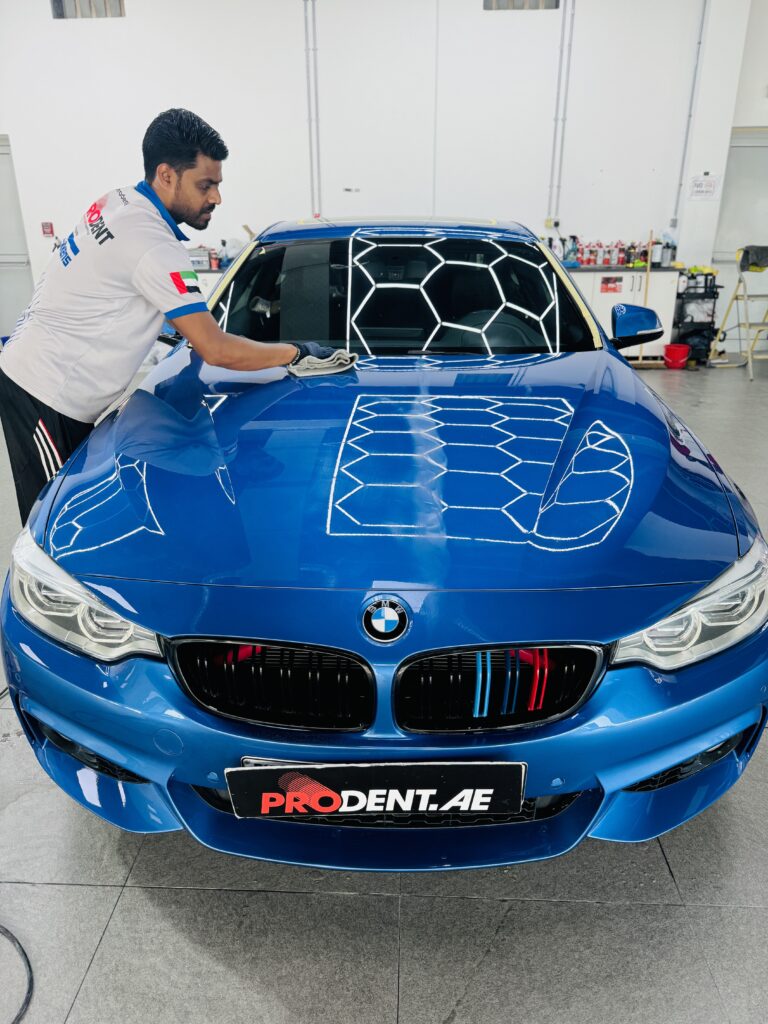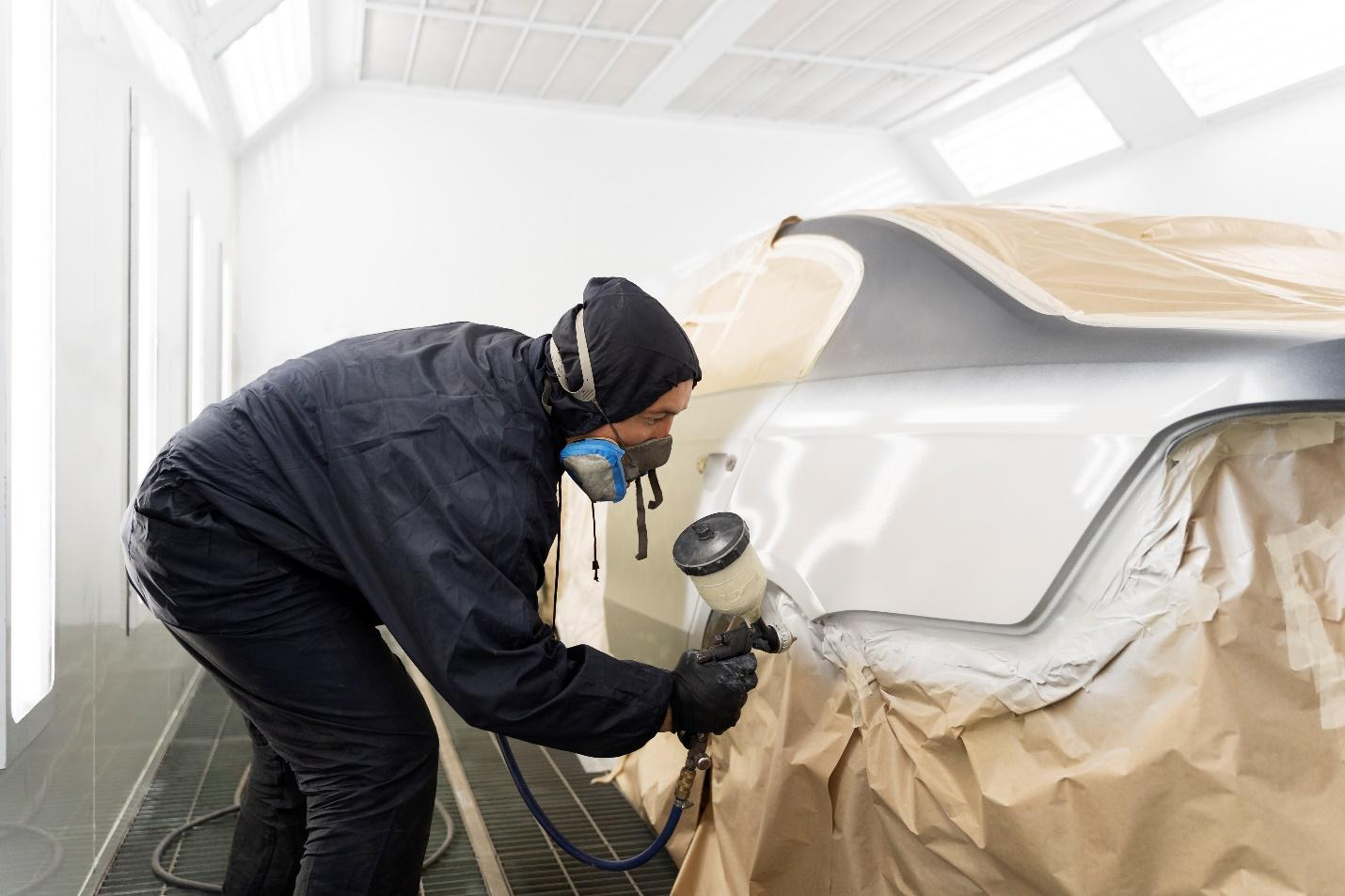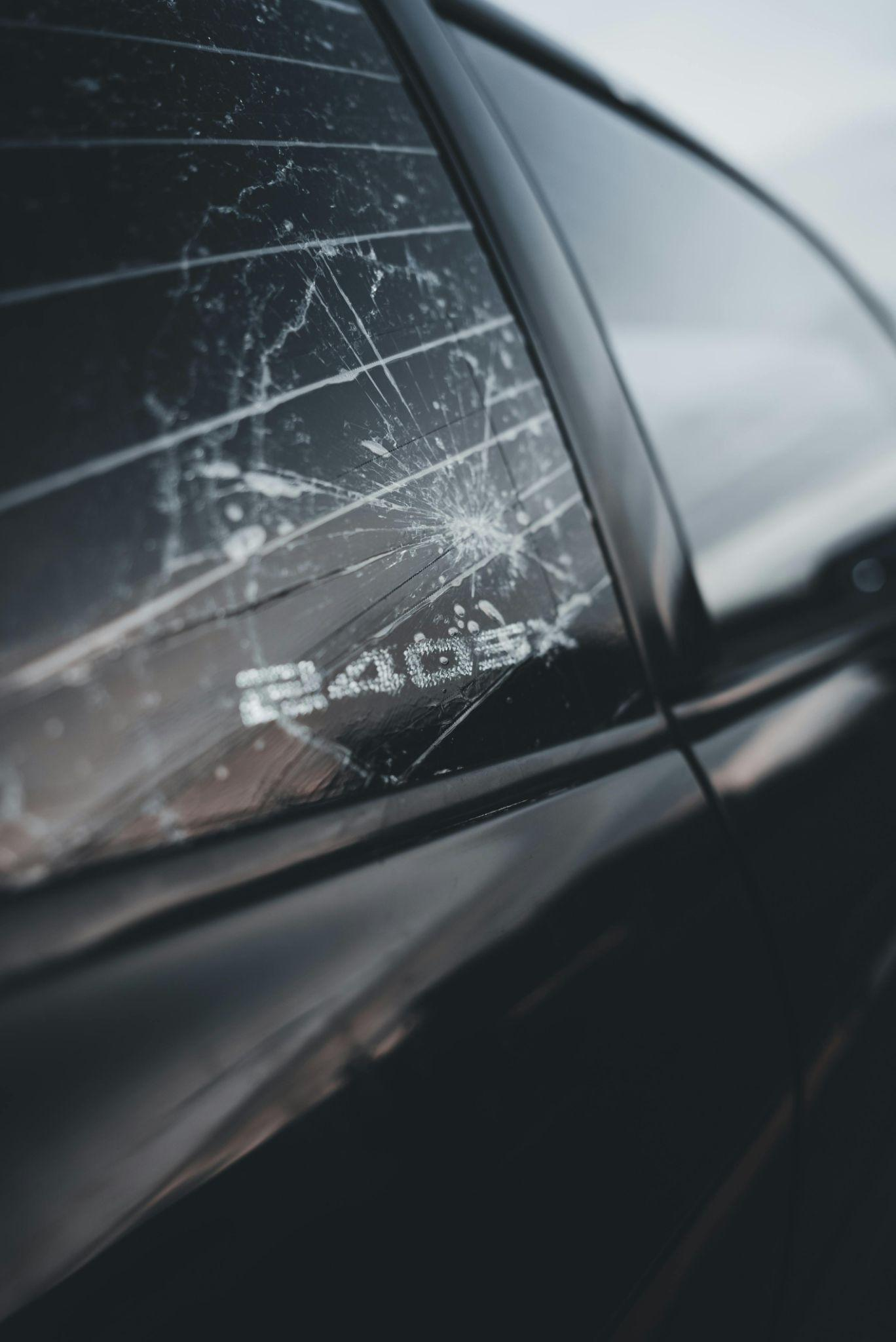If you love your car, you want to keep it looking brand new for as long as possible.
But with road debris, harsh weather, and daily use, protecting your car’s paint becomes a real challenge. Two of the most popular options today are PPF (Paint Protection Film) and ceramic coating.
But how do you choose between them? If you ask about PPF vs ceramic coating, you’re not alone.
In this guide, we’ll break down the difference between PPF and ceramic coating in simple words, so you can easily decide which one suits your car and your budget best.
What is PPF (Paint Protection Film)?
PPF, short for Paint Protection Film, is a clear and thick urethane layer applied directly onto your car’s paint. It acts like a strong shield, protecting your car from scratches, small stone chips, bug splatters, and even light door dings. PPF is almost invisible and can cover the entire car or specific high-risk areas like the hood, bumpers, and side mirrors.
When you think about PPF or ceramic coating, PPF is the more physical protection option. It absorbs impacts that would normally scratch or chip your paint.
What is Ceramic Coating?
Ceramic coating is a liquid polymer that is applied to the exterior of a vehicle. Once it cures, it forms a strong, hydrophobic layer over the paint. This means water, dirt, and other substances slide off easily. It also protects your car’s paint from UV rays, chemical stains, and oxidation.
While it sounds very strong, it’s important to understand that when it comes to ceramic coating vs PPF, ceramic coatings do not stop physical damage like scratches or chips. Instead, they make your car easier to clean and keep it shiny for a longer time.
PPF vs Ceramic Coating: What’s the Real Difference?
When you compare PPF vs ceramic coating, you’ll see they are designed for different purposes. PPF offers strong physical protection. It prevents scratches, small dents, and rock chips. Ceramic coating, on the other hand, focuses more on protection from environmental factors like sun exposure, bird droppings, acid rain, and dirt.
In simple terms, if you want to protect against physical damage, PPF is the better choice. If you want your car to stay clean, glossy, and safe from chemical stains, ceramic coating is the way to go.
Which One Lasts Longer?
When thinking about ceramic coating or PPF which is best for car, lifespan matters. Good-quality PPF can last anywhere between 5 to 10 years if maintained properly. Ceramic coatings usually last between 2 to 5 years depending on the product used and how well you care for your car.
However, keep in mind that while ceramic coating may wear off gradually over time, PPF remains effective at absorbing physical impacts during its lifetime.
Cost Comparison: PPF or Ceramic Coating?
If you are trying to decide based on budget, ceramic coating is generally cheaper than PPF. A full car PPF installation is more expensive because of the material cost and the skilled labor needed to apply it properly.
Ceramic coating costs less upfront and protects against dirt, UV rays, and water spots, but it doesn’t stop scratches or chips. Ceramic coating offers great value if your main concern is cosmetic protection and easy maintenance.
On the other hand, if you often drive on highways, in construction areas, or places with lots of road debris, the higher cost of PPF might be worth the investment.
Ease of Maintenance: Which is Easier to Care For?
Ceramic coating makes washing your car much easier. Because of its hydrophobic nature, water beads off, and dirt doesn’t stick as easily. You can clean your car faster, and it stays shinier longer. However, regular professional maintenance is recommended to preserve the coating’s benefits.
PPF also offers some easy cleaning benefits, but is mainly about protection. Some types of PPF now come with hydrophobic features, but traditionally, ceramic coatings are better when you want a low-maintenance, clean-looking car.
Ceramic Coating or PPF: Which is Best for Your Car?
When it comes to choosing between ceramic coating or PPF which is best for car, it really depends on your needs. If your biggest worry is scratches, stone chips, and small dents, PPF is a better investment. It physically protects your car’s paint and keeps it looking new after everyday wear and tear.
If you are more focused on keeping your car clean, glossy, and protected against chemical damage, and you want an easier time washing it, then the ceramic coating is perfect. Many car owners actually combine both for maximum protection, using PPF on high-risk areas and ceramic coating over the entire car.
Conclusion
Both PPF and ceramic coating offer excellent protection, but they do it in different ways. If you are concerned about rock chips, scratches, and dents, PPF is worth the investment. If you care more about water beading, easy maintenance, and keeping a glossy look, ceramic coating is a great choice. At Prodent, we specialize in both solutions and can help you choose the right protection to keep your car looking its best. If you need expert advice or want to book a service, feel free to get in touch at +97150 360 4969 or email us at info@prodent.ae
Frequently Asked Questions
Is PPF better than ceramic coating?
PPF provides better physical protection against scratches and chips. Ceramic coating protects against dirt, UV rays, and water spots but doesn’t stop physical damage.
Can I apply both PPF and ceramic coating to my car?
Yes, many people apply PPF on high-impact areas and then cover the car with ceramic coating for a combined effect of physical and chemical protection.
How long does ceramic coating last compared to PPF?
Ceramic coating usually lasts 2 to 5 years, while PPF can last 5 to 10 years with good care.
Is PPF worth it for daily drivers?
Yes, especially if you drive daily on highways or rough roads where rock chips and debris are common. PPF keeps your car’s paint protected.
Which is easier to maintain, PPF or ceramic coating?
Ceramic coating is easier for day-to-day cleaning because of its hydrophobic properties, while PPF focuses more on protection against impacts.



